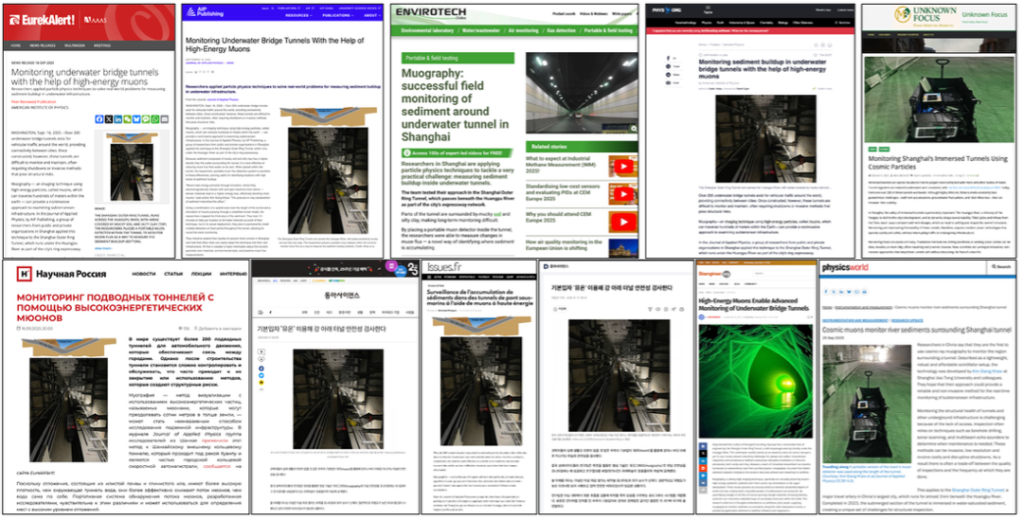We are thrilled to announce that our latest research paper, “Towards Non-Invasive Sediment Monitoring Using Muography: A Pilot Run at the Shanghai Outer Ring Tunnel,” has been published in the Journal of Applied Physics (Vol. 138, 114902, 2025). 📄 Read the paper here
This study marks an important milestone in applying cosmic-ray muography to civil and environmental engineering. Using a portable dual-layer plastic scintillator detector, our team conducted muon flux scans inside the Shanghai Outer Ring Tunnel—an immersed tunnel beneath the Huangpu River—to study sediment accumulation and tidal effects without disrupting tunnel operations.
Through careful Geant4 simulations and field measurements, we demonstrated a clear anti-correlation between muon flux and tidal water level, confirming muography’s sensitivity to subtle overburden changes caused by sediment and water variations. These results validate muography as a non-invasive, real-time monitoring technique for submerged infrastructure, offering a safer and more sustainable alternative to traditional geotechnical methods like borehole drilling or sonar scanning.
This collaborative work between Shanghai Jiao Tong University, Shanghai Geological Engineering Exploration, and several municipal partners highlights how particle physics technologies can play a transformative role in urban infrastructure resilience and environmental monitoring.

News outlets from different countries report the results. 
Location of the Shanghai Outer Ring Tunnel and the nearby tidal gauge station. 
Expected and measured muon flux along the Outer Ring Tunnel axis. 
Correlation between the muon flux rate and the river water level.
